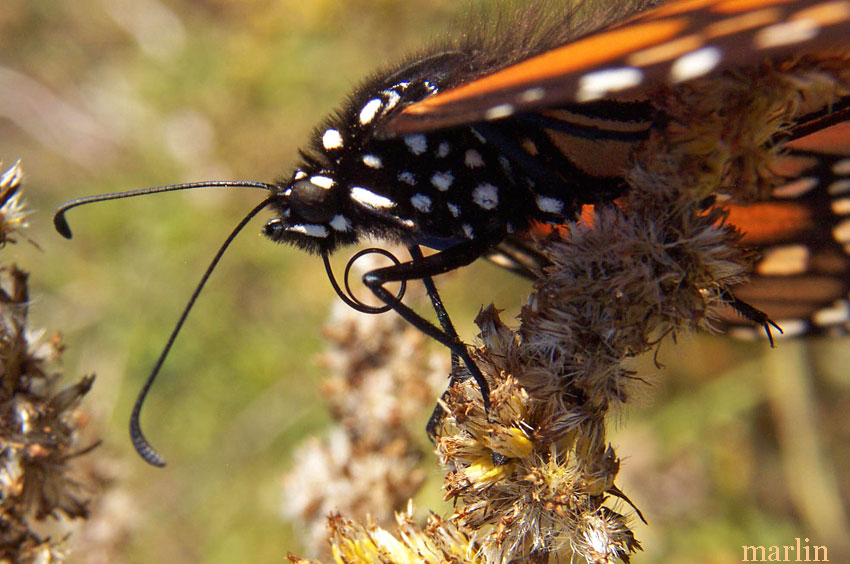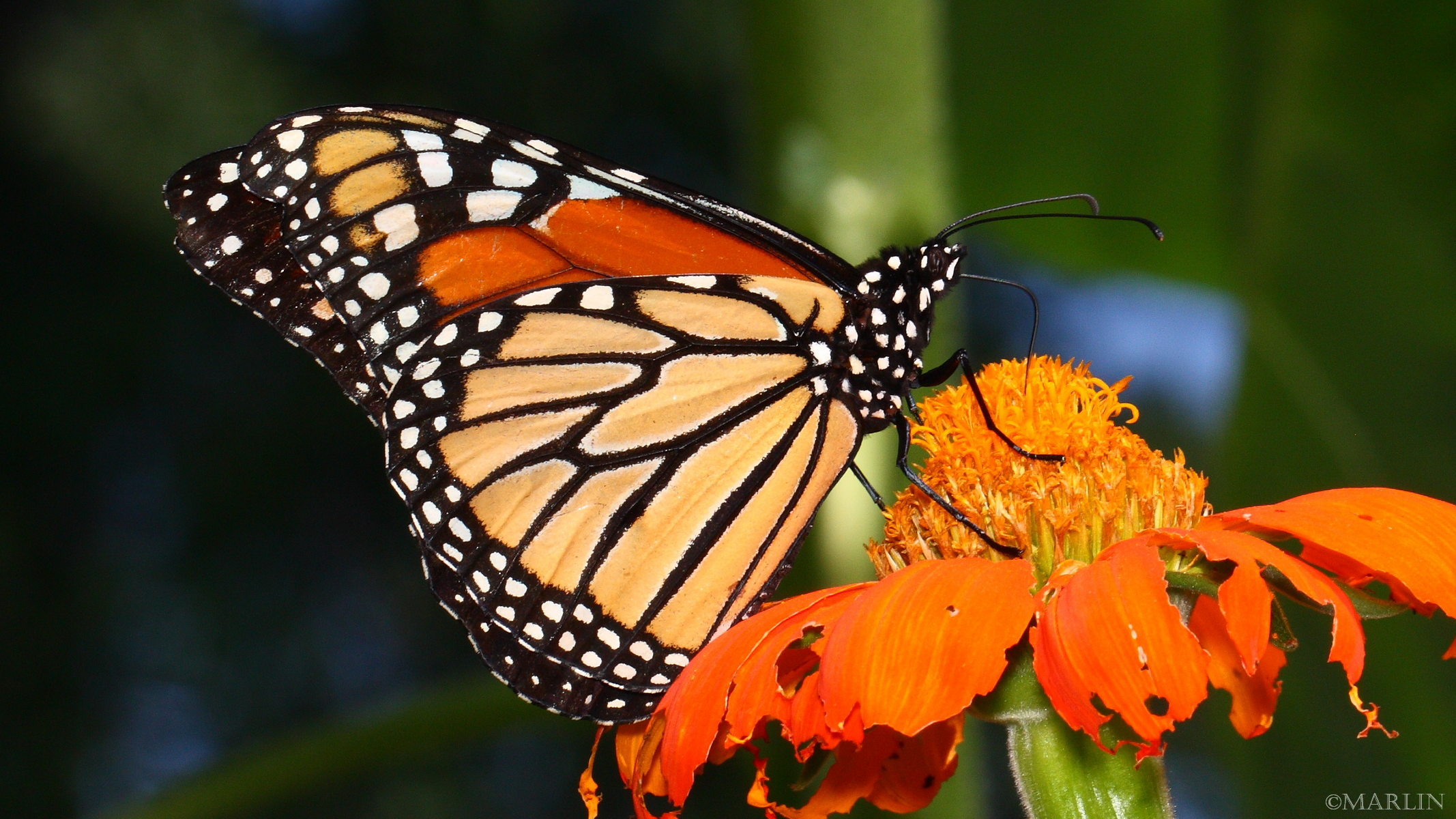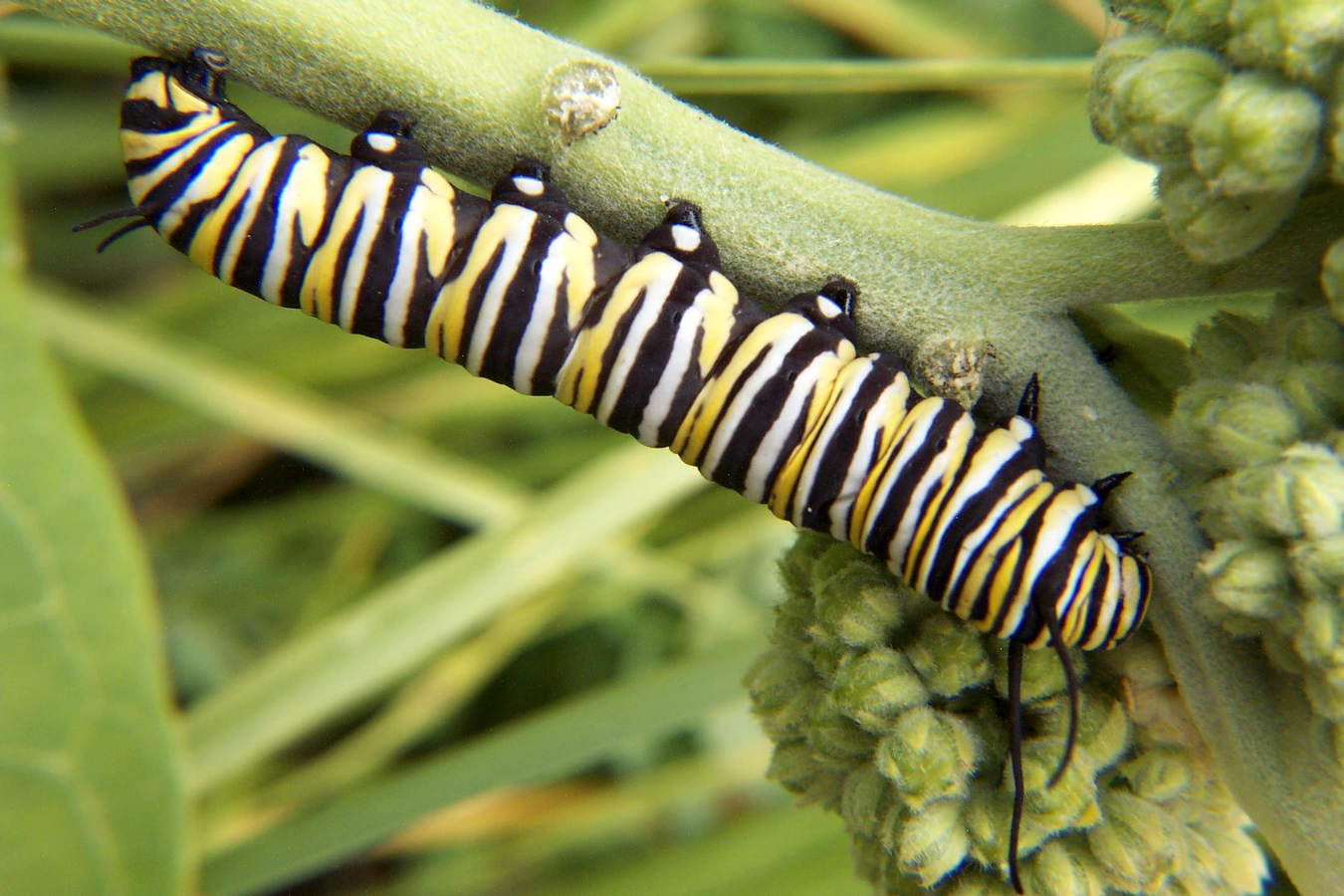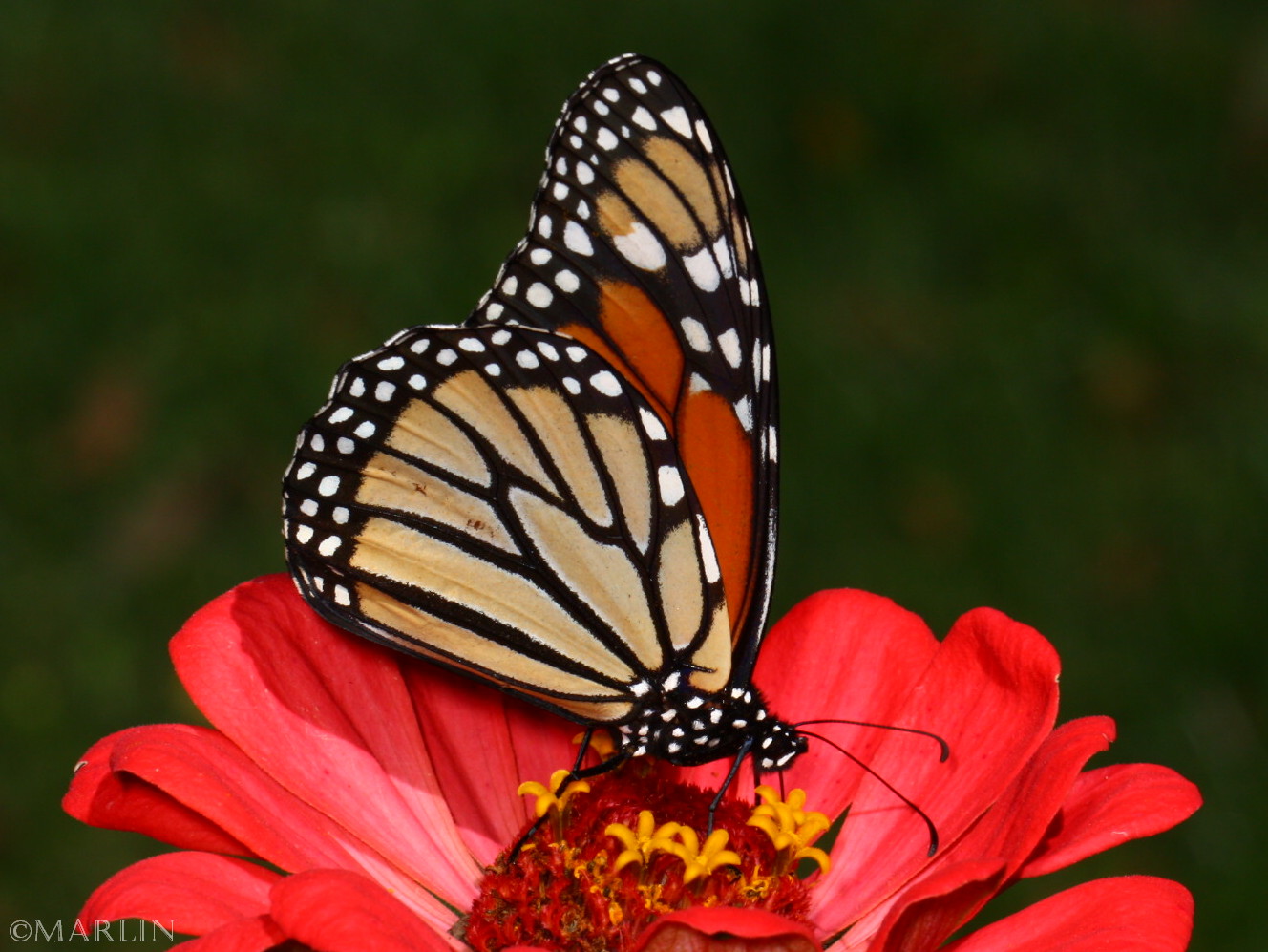Monarch Butterfly – Danaus plexippus
The Monarch is easily North America’s most famous butterfly. Common throughout the U.S. and southern Canada, the Monarch is found just about everywhere there are open, sunny areas. Caterpillars feed almost exclusively on milkweed plants which contain toxins that render both the larva and adult butterflies extremely distasteful to predators.
Annually, hundreds of millions* of monarch butterflies from the eastern U.S. and Canada migrate to central Mexico – a trip of as much as 2,000 miles. There, they overwinter in protected areas in the mountains in a state of diapause, living off fat reserves much the same way hibernating mammals do. Far Western and Sierra Nevada Monarchs fly to the central and southern coasts of California, overwintering in Pacific Grove and other locales.
Winter butterflies are sluggish and do not reproduce; they venture out in search of nectar on warm, sunny days. The winter survivors begin their journey northward about mid-March, laying millions of eggs in the southern U.S. As each generation hatches, they move progressively farther north and continue the cycle until their entire range has been repopulated for the summer. Both Mexican and international efforts are underway to protect the millions of Monarchs that flock to California and Mexico. In California, nearly all the roosting sites face pressure from development and urban sprawl.
*As of this writing, in 2022, in northern Illinois, monarchs are becoming scarce. All butterflies are becoming scarce. All insects are becoming scarce – even mosquitoes! (We are in a multi-year drought.)
Habitat: Open, sunny areas, especially weedy field and meadows. Host Plants: Various milkweeds, including common milkweed (Asclepias syriaca), scarlet milkweed (A. curassavica) and Dogbane (Apocynum).
Chrysalis is jade green, studded with gold. Successive broods April through June progressing northward, September to October migrating southward. Winters in coastal Monterey Pine and Monterey Cypress, Eucalyptus groves in California and Fir forests in Mexican mountains.
Nectar Sources: New England Aster (Aster novae-angliae), Beggarticks (Bidens spp.), Purple coneflower (Echinacea purpurea), Black-eyed Susan (Rudbeckia hirta), goldenrods (Solidago spp.), and various species of thistle (Cirsium sp.)
Range: Nearly all of North America. Absent from Alaska and Pacific Northwest coast. Resident year-round in Hawaii, established in Australia.

It is thought the dramatic orange and black markings of the adult butterfly advertise its unpalatability, detering attack. (Such coloration is known as aposematic, or warning color). In any event, the emetic qualities of the toxins quickly discourage any animal foolhardy enough to eat one. The Viceroy and Queen butterflies sport similar color patterns and share the same host plants – thereby reinforcing the lesson across the species.
Butterfly Index | Moth Pictures | Moths Index | Skipper Butterflies
Tree Encyclopedia / North American Insects & Spiders is dedicated to providing family-friendly educational
resources for our friends around the world through large images and macro photographs of flora and fauna.




